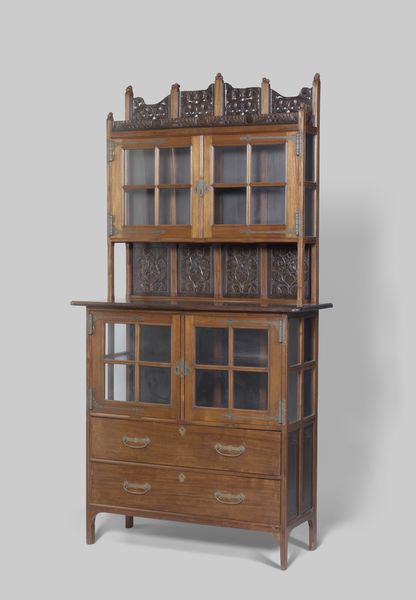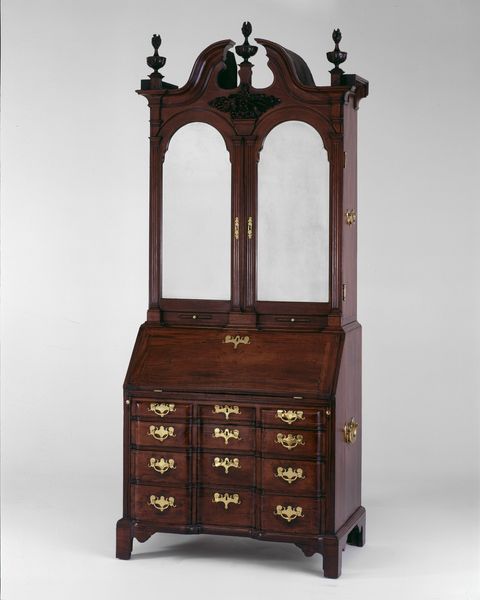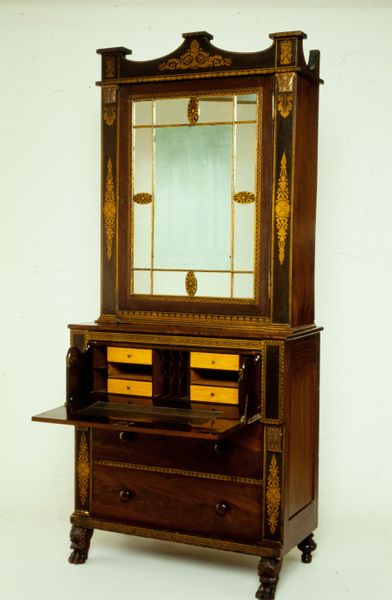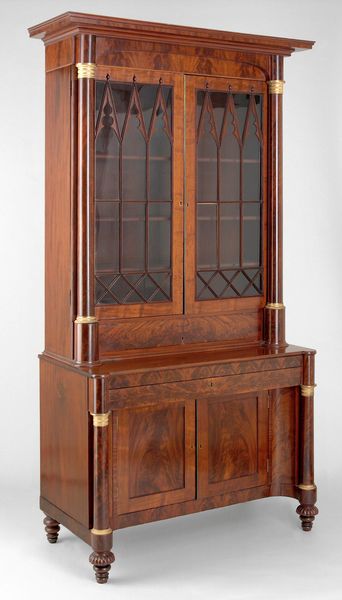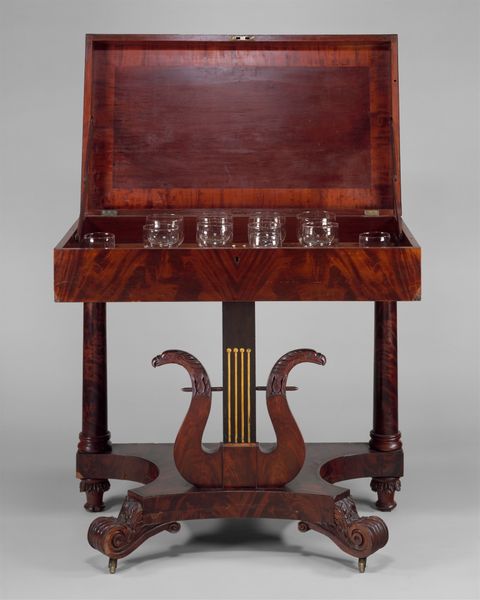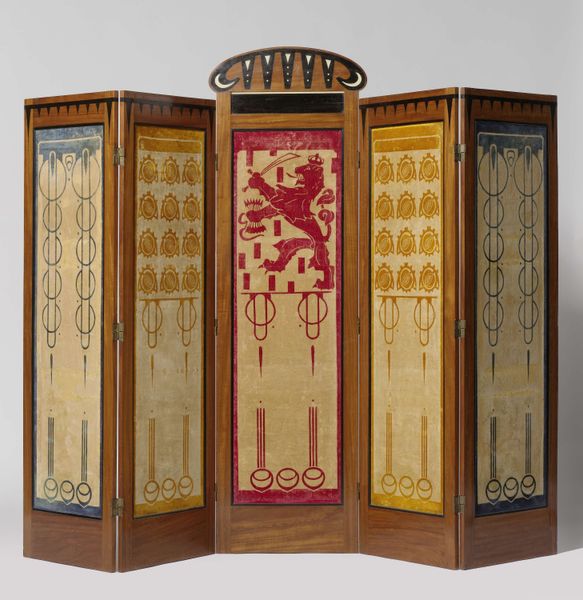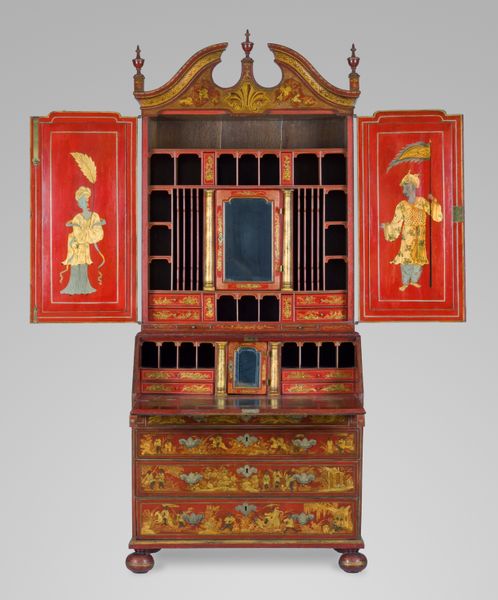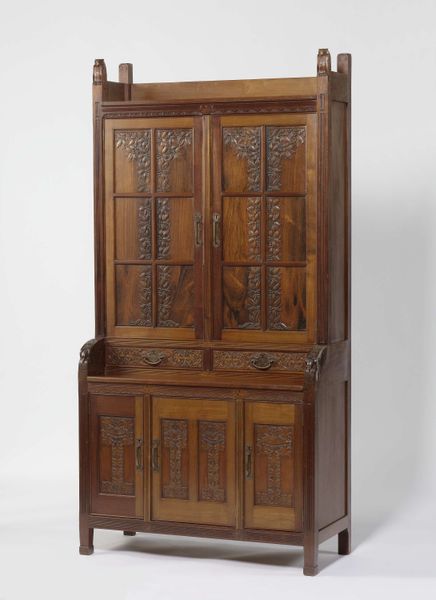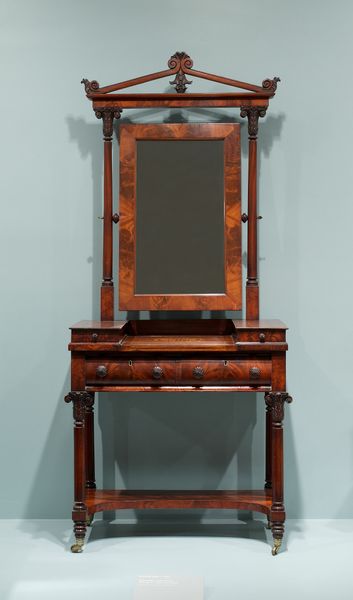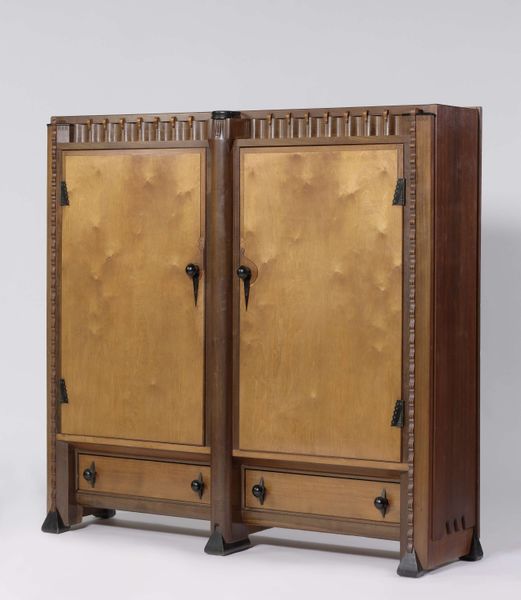
drawing, wood
#
drawing
#
wood texture
#
arts-&-crafts-movement
#
furniture
#
wood
#
decorative-art
Dimensions: 68 1/2 x 36 x 17 1/4in. (174 x 91.4 x 43.8cm)
Copyright: No Copyright - United States
Curator: Welcome. We're standing before "Display Cabinet," crafted around 1898. The artist is E.A. Taylor. Its materials consist mainly of wood with some added decorative drawing. Editor: It has such a strangely calming effect. Its vertical lines feel quite sturdy and stable. Curator: Yes, notice how Taylor's use of the grid structure and subtle ornamentation achieves a balanced symmetry. The dark wood contrasted with the small copper or brass details really grounds the overall piece, creating a harmonious form. It seems quite indicative of the Arts and Crafts movement at the turn of the century. Editor: I'm more struck by how this piece embodies ideas around domesticity and presentation within the Arts and Crafts movement. These cabinets, typically positioned inside of a middle-class family room, visually asserted their role in upholding ideals tied to domestic propriety. A glass display allowed them to communicate certain information about who these people were: their taste, education, even their social aspirations. Curator: Well observed! The careful joinery, honest materials... Taylor eschews excessive Victorian ornamentation. He is creating visual value out of functional, straightforward designs. And these small panels above the drawers—a simple flower or bud pattern. Editor: Yes! The botanical motifs speak to the movement's deep appreciation for nature. They're carefully positioned. Notice their symmetrical order, an intentional choice reinforcing ideas of control and order. By arranging possessions within its glass framework, it transforms the objects themselves into carefully curated representations of their social identity. Curator: In the end, we see that Taylor creates unity from modular components to give formal order that speaks about artistic goals beyond craft making alone. Editor: Agreed. Its design suggests how power manifests itself materially. How can everyday objects create social identities? We might consider how Taylor made statements on beauty itself, as tied to ideas around race and gender through material, function, and structure.


